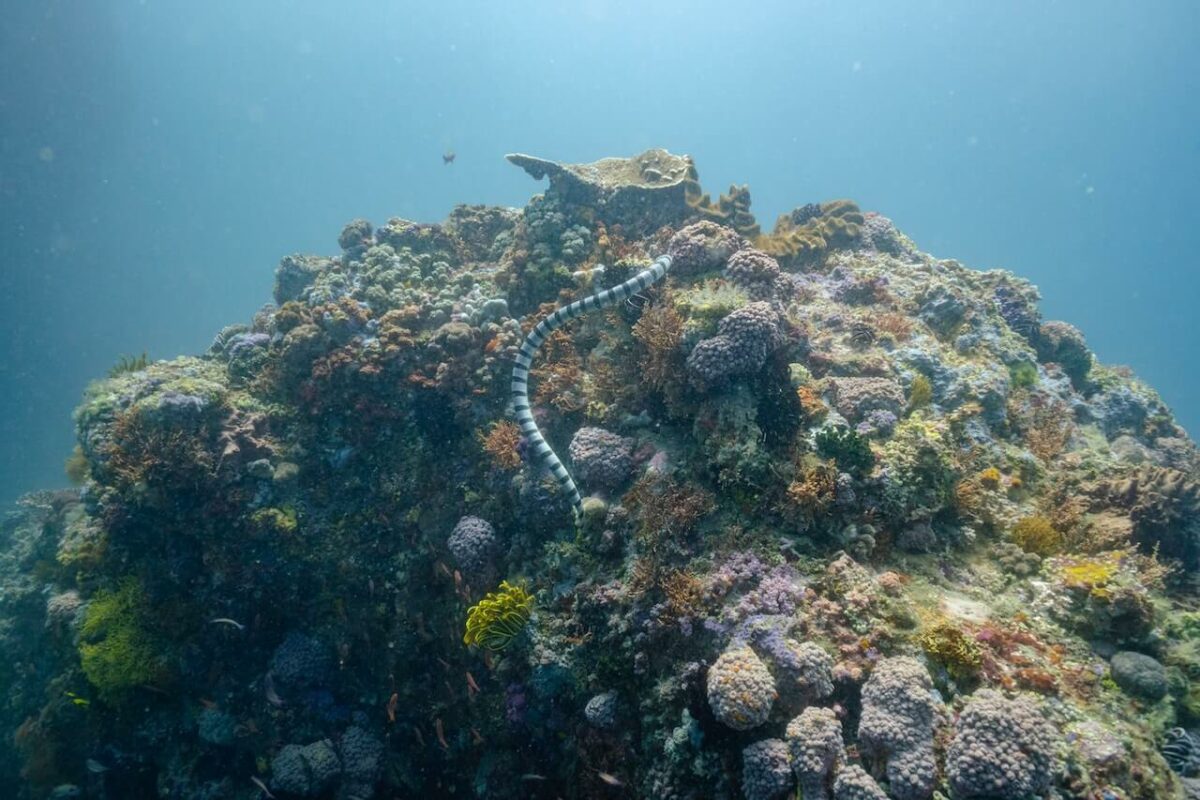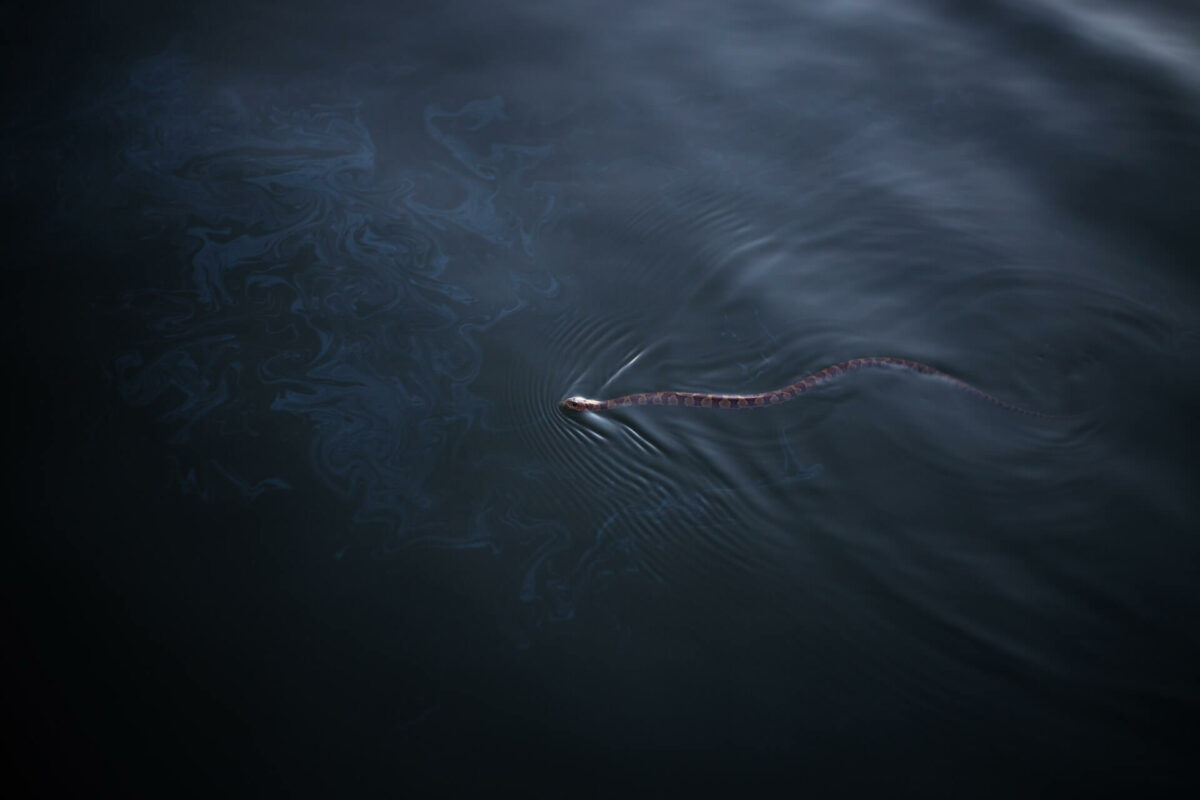When planning a trip to the beach or partaking in an underwater oceanic adventure most people might think of the risks of encountering sharks, eels, or jellyfish but it’s far less common to be worried about sea snakes.
In fact, I wouldn’t be surprised if I came across someone who’s never even heard of them.
However, I am here today to tell you that sea snakes are very real and extremely venomous and while they have a very calm nature it’s important that if you will be visiting a beach where these creatures are present you know exactly what to do if you see a sea snake.
In this article, I will advise you on if sea snakes are known to attack people, if you can survive a bite from these “danger noodles”, where they are found and how to avoid them in the first place, and most importantly, what to do if you come across one.
Do Sea Snakes Attack people?
Yes. Sea snakes are responsible for about 15,000 – 75,000 bites per year worldwide.
Nevertheless “attack” sounds like an aggressive term when describing these encounters as around 90% of these bites occur to fishermen who have accidentally caught sea snakes in their nets so it’s easy to see why a trapped, stressed snake would strike.
Something else to keep in mind is that the vast majority of these bites are non-fatal as the snake injects very little venom or no venom at all. The latter is also known as a “dry bite”.
Sea snakes use dry bites when attacking something they can’t, or won’t, eat (such as a person) usually as a response to feeling threatened or suddenly startled.

Otherwise, these reptiles are known for their calm nature and will normally retreat when feeling uncomfortable rather than attack.
In Australia for example the first deadly sea snake bite was recorded in 1935 and the 2nd one occurred 83 years later in 2018.
No other sea snake-related fatalities have occurred in Australia which is known to house at least 36 of the estimated 70 different species of sea snake.
You can even book trips to go diving and snorkeling with these super venomous, but normally super chill, aquatic reptiles.
To further prove this point I want to remind you that over 90% of attacks occur to fishermen who have accidentally caught them in their lines or nets and 0% occur to bathers and beachgoers as the snake has enough space to just swim away from a situation.
Can You Survive A Bite From A Sea Snake?
Yes! In fact, most of these bites are non-fatal! Only 3% of all sea snake bites result in the death of the victim.
All sea snakes are highly venomous, even more than some of their most venomous land-based cousins.
The beaked sea snake for example has venom so potent that just 3 drops are more than enough to kill 8 average-sized adult humans.
However, this doesn’t mean that every time a snake bites it injects all of its venom at once!
Most of the time a snake will only inject a small percentage of its available venom if it’s enough to get the job done or even no venom at all when delivering a dry bite.
The amount of venom injected into a bite will determine the extent of the damage and the amount of time available for the victim to receive medical attention.
Currently, there are very effective antivenoms, and thanks to medical advances in treating these bites deaths only occur in cases where the victim doesn’t get medical attention within the first few hours.
What To Do If You See A Sea Snake
If you’re swimming, snorkeling, or diving and come across a sea snake here is what you need to do:
DON’T PANIC!
These snakes are very calm and don’t view you as a food source.
They are, however, attracted to movement so if you start frantically moving to try to get away from the snake it will either quickly swim away from you or likely come closer to check you out.
If the sea snake is close to you try to remain calm and still as this reptile doesn’t have the best eyesight so it may come close due to curiosity but once it figures out you’re not a potential mate, threat, or meal it will just swim away.
I know it must be nerve-wracking having a highly venomous reptile coming straight toward you but in this scenario, scientists always advise you to stay very still as it is very likely that it could be a male searching for a mate.
I know you look nothing like a snake but remember they have poor eyesight and if you swim away it will mimic the behavior of a female being courted and it will be a sign for the male to start a love chase that I’m sure you don’t want to be a part of.
Don’t chase the snake or try to touch it
This might seem obvious but just in case I want to make sure you know that chasing or trying to touch/grab a sea snake is an extremely bad decision.
Move away
Once the snake is moving away from you and getting on with its day you should consider doing the same and start moving away very slowly.

Remember you don’t want to move too much as the sea snake could view you as a threat.
How To Avoid A Sea Snake Attack
Remember sea snakes are very calm animals and it is highly unlikely they will attack you but if you want to be sure never to encounter one then the only recommendation is to avoid waters known to house these creatures.
If you don’t want to be as extreme but still want to play it on the safe side try these tips:
- Avoid getting in the water during sea snake breeding season. Some species, particularly the olive sea snake, are known to chase divers and even coil around their arms or legs in what is believed to be a case of mistaken identity when males are looking for a mate.
Although this is not exactly an “attack” and divers rarely get bitten on these episodes it might be better to avoid putting yourself in this situation in the first place.
- Always be aware of your surroundings. Be on the lookout for washed-up snakes on the beach, or coiled in corals to make sure you don’t accidentally step on one.
- Wear protective gear. Most sea snakes have short fangs that can’t penetrate most neoprene suits.
Where Are Sea Snakes Found?
Like their land-based relatives, sea snakes can’t live in cold environments so they are found in the warm, tropical, coastal waters of the Indian and western Pacific oceans.
Only one species is known to live a more pelagic lifestyle and is found swimming further from the coast.
Final Thoughts
I know for most the thought of an ultra-venomous sea snake can be something very scary but it’s important to keep in mind that these amazing creatures attack rarely and only do so when feeling threatened.
Sea snakes must carry the unfair weight of being misunderstood while they are just as deserving as you and I of being treated with respect especially when we are the ones visiting their home.
I hope this article has helped you understand these enigmatic reptiles better and be better prepared in the case of an encounter.
I am a lover of everything nature and animal related with over 15 years of experience in the field of wildlife rescue and education. Currently living in Colombia working with wild and domestic animals and spending all my free time writing about them 🙂

